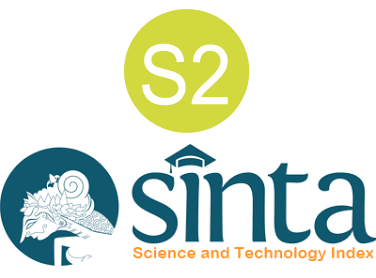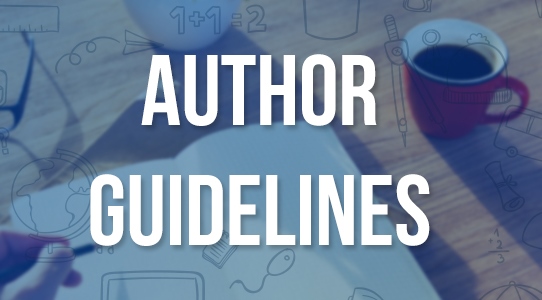The Role of Future Work Self Towards Career Search Efficacy Among Undergraduate Students
DOI:
https://doi.org/10.37680/qalamuna.v17i1.5614Keywords:
Bandung; Career Search Efficacy; Future Work Self; StudentsAbstract
In adolescence and adulthood, individuals have the developmental task of finding the right career. Individuals can explore their career goals through their experiences, interests, talents, and skill development. This ability leads to career search efficacy. Bandung is a city with policies and access to information that is easy to reach by various parties. This makes the scope of a person to find a field of work wider. Based on these phenomena, researchers are interested in seeing the role of career search efficacy on future work self in undergraduate students in Bandung. Future work self is a promising concept for understanding how young people view and plan their careers in the contemporary workplace. The participants of this study were 101 students in Bandung city which were obtained through accidental sampling. This study utilized the Career Search Efficacy Scale and the Future Work Self measurement tool. The data analysis technique used was simple linear regression. The results showed that future work self does not significantly influence undergraduate students' career search efficacy in Bandung.
References
Betz, N. E. (1992). Counseling Uses of Career Self‐Efficacy Theory. The Career Development Quarterly, 41(1), 22–26. https://doi.org/10.1002/j.2161-0045.1992.tb00352.x
Betz, N. E., & Hackett, G. (1986). Applications of Self-Efficacy Theory to Understanding Career Choice Behavior. Journal of Social and Clinical Psychology, 4(3), 279–289. https://doi.org/10.1521/jscp.1986.4.3.279
Betz, N. E., Klein, K. L., & Taylor, K. M. (1996). Evaluation of a Short Form of the Career Decision-Making Self-Efficacy Scale. Journal of Career Assessment, 4(1), 47–57. https://doi.org/10.1177/106907279600400103
Blustein, D. L., Prezioso, M. S., & Schultheiss, D. P. (1995). Attachment Theory and Career Development: Current Status and Future Directions. The Counseling Psychologist, 23(3), 416–432. https://doi.org/10.1177/0011000095233002
Brown, S. D., & Lent, R. W. (2013). Career Development and Counseling: Putting Theory and Research to Work (2nd Edition). John Wiley & Sons, Inc.
Chong, S., & Leong, F. T. L. (2017). Antecedents of Career Adaptability in Strategic Career Management. Journal of Career Assessment, 25(2), 268–280. https://doi.org/10.1177/1069072715621522
Guan, Y., Guo, Y., Bond, M. H., Cai, Z., Zhou, X., Xu, J., Zhu, F., Wang, Z., Fu, R., Liu, S., Wang, Y., Hu, T., & Ye, L. (2014). New job market entrants’ future work self, career adaptability, and job search outcomes: Examining mediating and moderating models. Journal of Vocational Behavior, 85(1), 136–145. https://doi.org/10.1016/j.jvb.2014.05.003
Guilford, J. P. (1957). Fundamental Statistics in Psychology and Education. Science Education, 41(3), 244–244. https://doi.org/10.1002/sce.3730410357
Gunawan, G., Puspitasari, I., & Dwijayanthy, M. (2023). Peran Dukungan Sosial terhadap Career Search Efficacy dengan Moderator Future Work Self pada Mahasiswa di Kota Bandung. Syntax Literate ; Jurnal Ilmiah Indonesia, 8(11), 6491–6504. https://doi.org/10.36418/syntax-literate.v8i11.13906
Higgins, E. T. (1987). Self-discrepancy: A theory relating self and affect. Psychological Review, 94(3), 319–340. https://doi.org/10.1037/0033-295X.94.3.319
Higgins, E. T. (1998). Promotion and Prevention: Regulatory Focus as A Motivational Principle. Advances in Experimental Social Psychology, 30, 1–46. https://doi.org/10.1016/S0065-2601(08)60381-0
Hoyle, R. H., & Sherrill, M. R. (2006). Future Orientation in the Self‐System: Possible Selves, Self‐Regulation, and Behavior. Journal of Personality, 74(6), 1673–1696. https://doi.org/10.1111/j.1467-6494.2006.00424.x
Ibarra, H. (1999). Provisional Selves: Experimenting with Image and Identity in Professional Adaptation. Administrative Science Quarterly, 44(4), 764–791. https://doi.org/10.2307/2667055
Ibarra, H., Constance, B.D., & Cedex, F. (2005). Identity Transitions: Possible Selves, Liminality and The Dynamics of Career Change.
Kumar, R. (2014). Research Methodology: A Step-by-Step Guide for Beginners 4th Edition. Sage Publications.
Lin, W., Wang, L., Bamberger, P. A., Zhang, Q., Wang, H., Guo, W., Shi, J., & Zhang, T. (2016). Leading future orientations for current effectiveness: The role of engagement and supervisor coaching in linking future work self salience to job performance. Journal of Vocational Behavior, 92, 145–156. https://doi.org/10.1016/j.jvb.2015.12.002
Markus, H., & Nurius, P. (1986). Possible selves. American Psychologist, 41(9), 954–969. https://doi.org/10.1037/0003-066X.41.9.954
Moretti, M. M., & Tory Higgins, E. (1990). Relating self-discrepancy to self-esteem: The contribution of discrepancy beyond actual-self ratings. Journal of Experimental Social Psychology, 26(2), 108–123. https://doi.org/10.1016/0022-1031(90)90071-S
Napitupulu, E. L. (2018, April 27). Kualitas Pendidikan Rendah. Kompas.Id. https://www.kompas.id/baca/utama/2018/04/27/kualitas-pendidikan-rendah
Papalia, D. E., Olds, S. W., & Feldman, R. D. (2007). Human Development. McGraw-Hill.
Paulson, R., & Wachtel, M. (1995). Using Linearity Assessment in the Laboratory. Laboratory Medicine, 26(8), 526–532. https://doi.org/10.1093/labmed/26.8.526
Prikshat, V., Montague, A., Connell, J., & Burgess, J. (2019). Australian graduates’ work readiness – deficiencies, causes, and potential solutions. Higher Education, Skills and Work-Based Learning, 10(2), 369–386. https://doi.org/10.1108/HESWBL-02-2019-0025
Priyono, S., & Nankervis, A. (2019). Graduate Work -Readiness Challenges in Indonesia -Findings from a Multiple Stakeholder Study. In S. Dhakal, V. Prikshat, & A. Nankervis (Eds.), The Transition from Graduation to Work. Springer Singapore (pp. 107–123). Springer Singapore. https://doi.org/10.1007/978 -981 -13 -0974 -8_7 15
Sagita, M. P., Hami, A. El, & Hinduan, Z. R. (2020). Development of Indonesian Work Readiness Scale on Fresh Graduates in Indonesia. Jurnal Psikologi, 19(3), 297–314. https://doi.org/10.14710/jp.19.3.297-314
Saks, A. M. (2005). Job Search Success: A Review and Integration of the Predictors, Behaviors, and Outcomes. In S. D. Brown & R. W. Lent (Eds.), Career development and counseling: Putting theory and research to work (pp. 155–179). John Wiley & Sons, Inc.
Schlossberg, N. K. (1981). A Model for Analyzing Human Adaptation to Transition. The Counseling Psychologist, 9(2), 2–18. https://doi.org/10.1177/001100008100900202
Schwartz, S. J., Côté, J. E., & Arnett, J. J. (2005). Identity and Agency in Emerging Adulthood. Youth & Society, 37(2), 201–229. https://doi.org/10.1177/0044118X05275965
Singh, A. S., & Masuku, M. B. (2014). Assumption and Testing of Normality for Statistical Analysis. American Journal of Mathematics and Mathematical Sciences, 3(1), 169–175.
Solberg, V. S. (1998). Assessing Career Search Self-Efficacy: Construct Evidence and Developmental Antecedents. Journal of Career Assessment, 6(2), 181–193. https://doi.org/10.1177/106907279800600205
Solberg, V. S., Good, G. E., Fischer, A. R., Brown, S. D., & Nord, D. (1995). Career decision-making and career search activities: Relative effects of career search self-efficacy and human agency. Journal of Counseling Psychology, 42(4), 448–455. https://doi.org/10.1037/0022-0167.42.4.448
Solberg, V. S., Good, G. E., & Nord, D. (1994). Career search self-efficacy: Ripe for applications and intervention programming. Journal of Career Development, 21(1), 63–72. https://doi.org/10.1007/BF02107104
Solberg, V. S., Good, G. E., Nord, D., Holm, C., Hohner, R., Zima, N., Heffernan, M., & Malen, A. (1994). Assessing Career Search Expectations: Development and Validation of the Career Search Efficacy Scale. Journal of Career Assessment, 2(2), 111–123. https://doi.org/10.1177/106907279400200202
Spence, M. (1973). Job Market Signaling. The Quarterly Journal of Economics, 87(3), 355. https://doi.org/10.2307/1882010
Strauss, K., Griffin, M. A., & Parker, S. K. (2012). Future work selves: How salient hoped-for identities motivate proactive career behaviors. Journal of Applied Psychology, 97(3), 580–598. https://doi.org/10.1037/a0026423
Super, D. E. (1980). A life-span, life-space approach to career development. Journal of Vocational Behavior, 16(3), 282–298. https://doi.org/10.1016/0001-8791(80)90056-1
Super, D. E., Savickas, M. L., & Super, C. M. (1996). The life-span, life-space approach to careers. In D. Brown & L. Brooks (Eds.), Career choice and development (3rd ed.) (pp. 121–178). Jossey-Bass.
Van Hooft, E. A. J., Kammeyer-Mueller, J. D., Wanberg, C. R., Kanfer, R., & Basbug, G. (2021). Job search and employment success: A quantitative review and future research agenda. Journal of Applied Psychology, 106(5), 674–713. https://doi.org/10.1037/apl0000675
Yang, P., Riepe, J., Moser, K., Pull, K., & Terjesen, S. (2019). Women directors, firm performance, and firm risk: A causal perspective. The Leadership Quarterly, 30(5), 101297. https://doi.org/10.1016/j.leaqua.2019.05.004
Downloads
Published
How to Cite
Issue
Section
License
Authors who submit manuscript retain its copyright and grant publisher right of first publication licensed under a Creative Commons Attribution-ShareAlike 4.0 International License (CC BY-SA 4.0) that allows others to access (search, read, download, and cite), share (copy and redistribute the material in any medium or format) and adapt (remix, transform, and build upon any material) the work for any lawful purpose, even commercially with an acknowledgement of the work's authorship and initial publication in Qalamuna: Jurnal Pendidikan, Sosial, dan Agama.











